Kicking off the install we get our old friend the IBM logo. Â At least they get to re-use stuff over and over and over…
And… the old welcome screen. Â Sometimes it’s hard to know what version you are installing. Â Well other then the mountain of diskettes! It’s 23 disks by now!
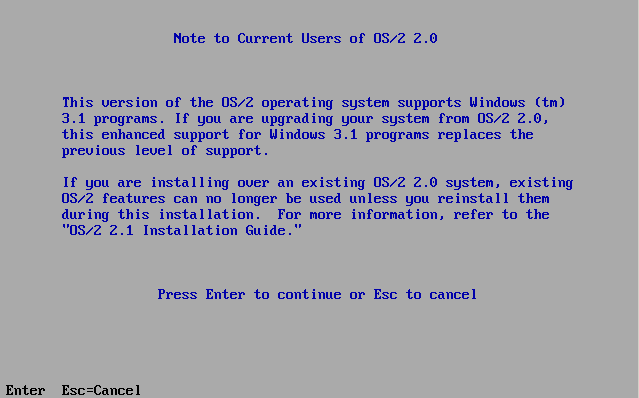 This sounds.. foreboding.  I guess we’ll find out as we go along.
This sounds.. foreboding.  I guess we’ll find out as we go along.
 And once more again, OS/2 can be installed in all kinds of places.. And to keep the upgrade cycle going we are going to remain on the C drive…
And once more again, OS/2 can be installed in all kinds of places.. And to keep the upgrade cycle going we are going to remain on the C drive…
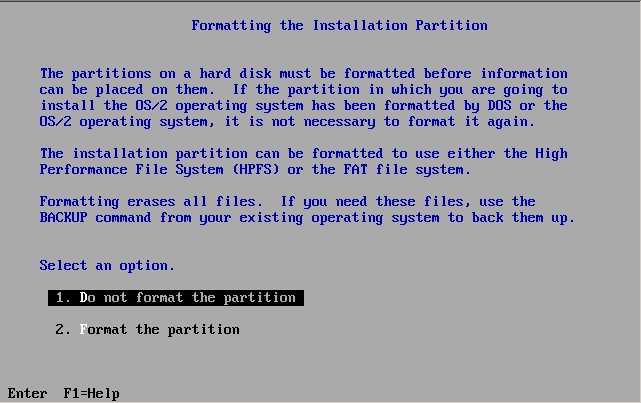 I guess by now I should get used to OS/2 trying to offer to format my hard disk.
I guess by now I should get used to OS/2 trying to offer to format my hard disk.
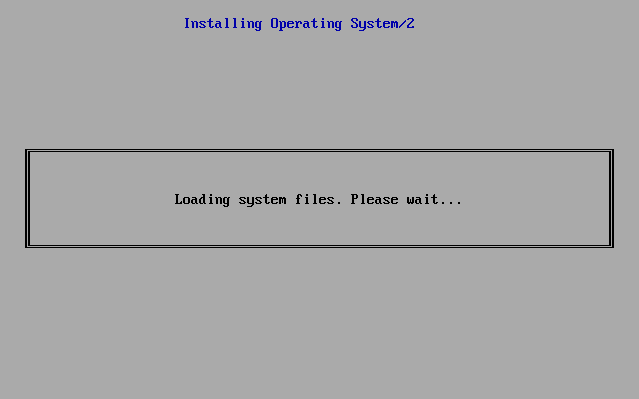 Time to feed the machine a bunch of disks…
Time to feed the machine a bunch of disks…
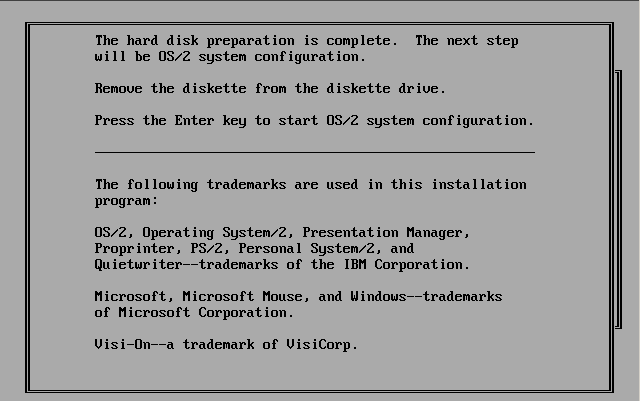 And now we are ready to boot up the GUI… Again is this OS/2 2.0 or 2.1? It’s hard to tell.
And now we are ready to boot up the GUI… Again is this OS/2 2.0 or 2.1? It’s hard to tell.
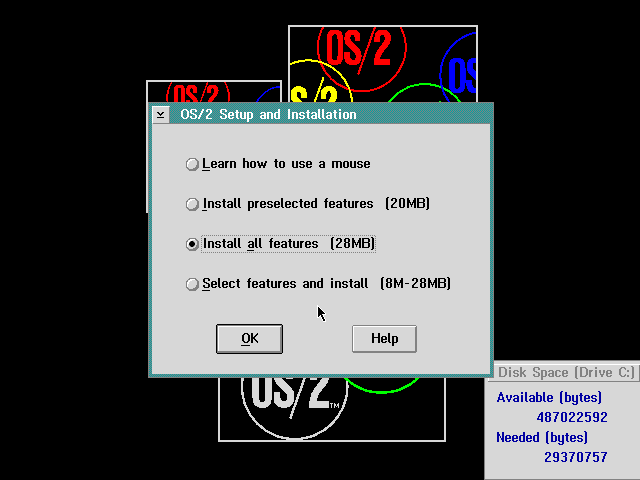 And let’s install the whole thing… wee!
And let’s install the whole thing… wee!
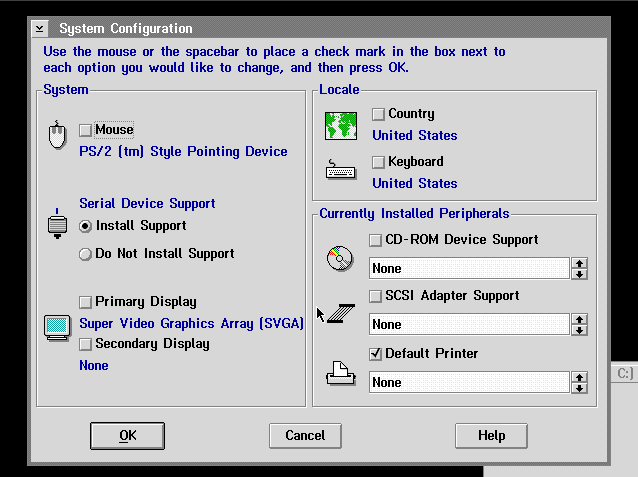 Well this is new.. CD-ROMs were becoming more and more popular. Â Sadly the IDE CDROM standard had not been invented yet. Â So… going stock, no IDE-CDROMs yet.
Well this is new.. CD-ROMs were becoming more and more popular. Â Sadly the IDE CDROM standard had not been invented yet. Â So… going stock, no IDE-CDROMs yet.
 And once more again I have to select the IBM Proprinter II and assign it to LPT1. Â Why oh why am I constantly having to do this? Â There is no real logic as to why some versions migrate this, and others do not.
And once more again I have to select the IBM Proprinter II and assign it to LPT1. Â Why oh why am I constantly having to do this? Â There is no real logic as to why some versions migrate this, and others do not.
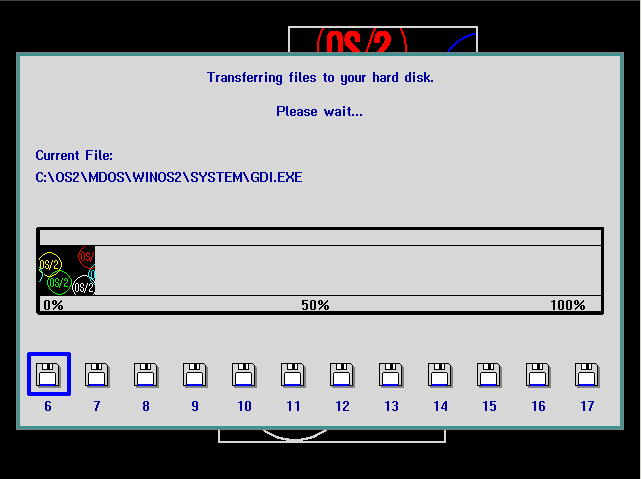 Time to feed some disks to the computer, and wonder about that warning…
Time to feed some disks to the computer, and wonder about that warning…
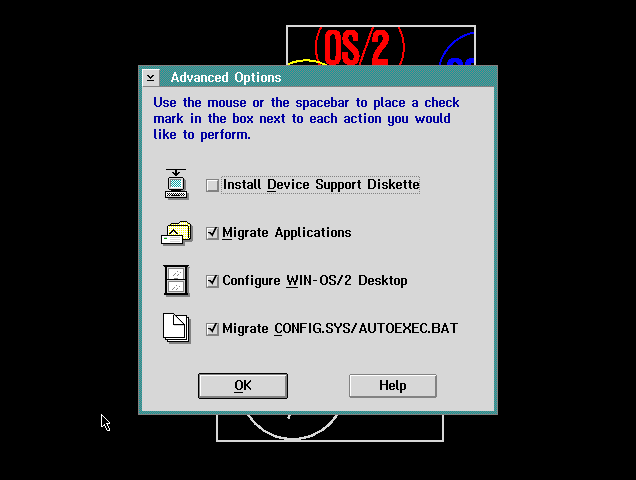 Didn’t we do this before? Â Again I’m going to go through with it…
Didn’t we do this before? Â Again I’m going to go through with it…
Worst case I’ll have two icon sets now for Word & Excel.
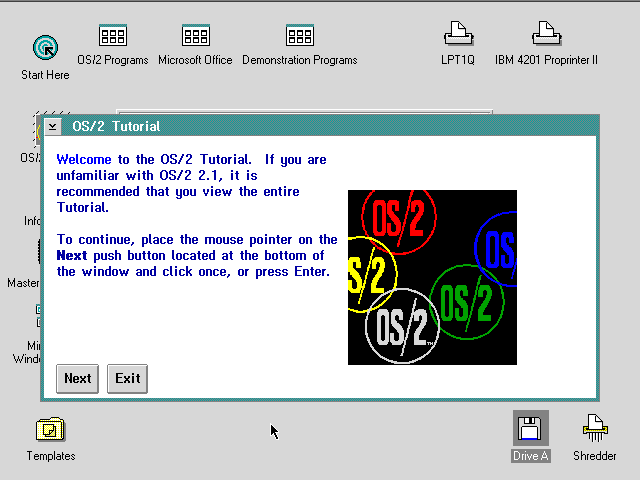 Ok, looks good.. OS/2 2.1 … Which to be honest looks identical to OS/2 2.0.
Ok, looks good.. OS/2 2.1 … Which to be honest looks identical to OS/2 2.0.
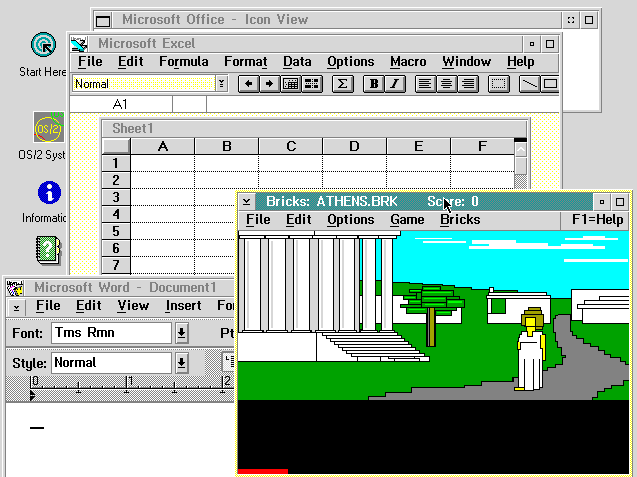 The good news is that Word and Excel still work, and Bricks the breakout clone from OS/2 1.1 is still working. Â I still have my two printers..
The good news is that Word and Excel still work, and Bricks the breakout clone from OS/2 1.1 is still working. Â I still have my two printers..
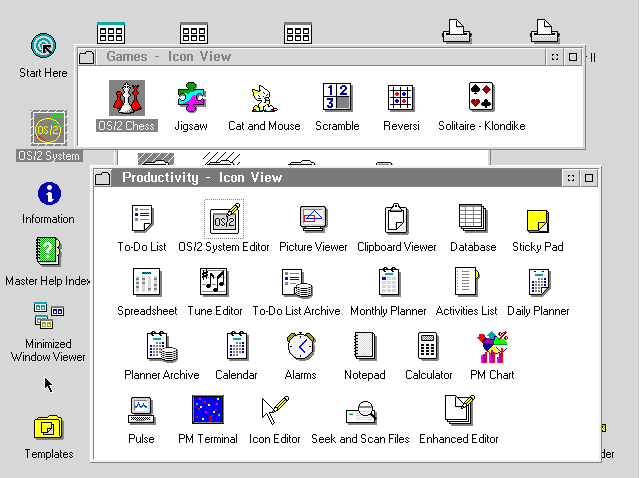 Games & Productivity look identical.
Games & Productivity look identical.
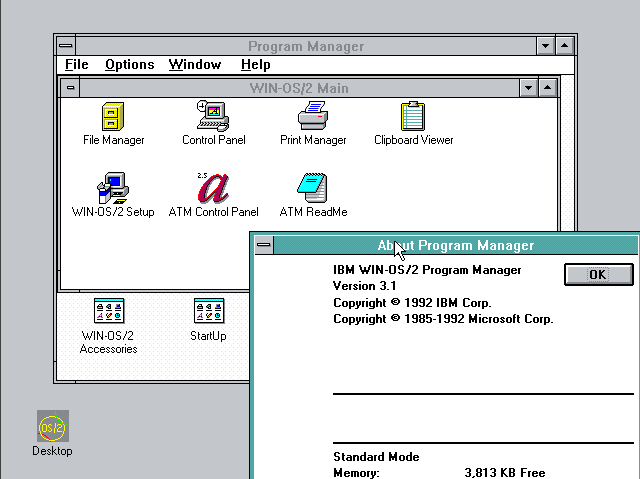 The ‘bigger’ deal is that Win-OS/2 was updated to Windows 3.1!
The ‘bigger’ deal is that Win-OS/2 was updated to Windows 3.1!
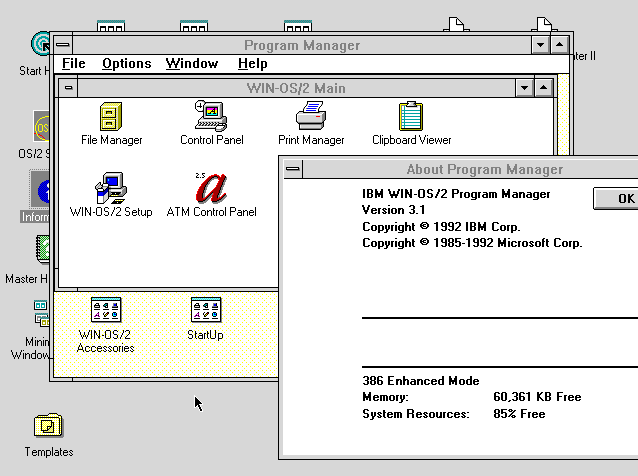 And it could now run in 386 Enhanced Mode, while OS/2 2.0’s Windows 3.0 was limited to ‘real’ and ‘standard’ (286 protected mode) modes of operation. Â The only big limitation was that you could not load any VXD’s into Windows 3.1. Â This made things like Win32s impossible to use. Â But again with it’s ability to isolate programs it made OS/2 a far superior platform for Windows applications.
And it could now run in 386 Enhanced Mode, while OS/2 2.0’s Windows 3.0 was limited to ‘real’ and ‘standard’ (286 protected mode) modes of operation. Â The only big limitation was that you could not load any VXD’s into Windows 3.1. Â This made things like Win32s impossible to use. Â But again with it’s ability to isolate programs it made OS/2 a far superior platform for Windows applications.
The other big use for OS/2 was BBSing. Â It’s ability to run multiple DOS sessions was a big deal. Â And if anything OS/2’s ability to multitask DOS so well made OS/2 versions of stuff kind of moot. Â Even Synchronet didn’t sell that many OS/2 versions fo the BBS (I know it was largely because the tremendous rise of the Internet really changed that).
The other ‘big’ thing for OS/2 2.1 was the addition of the multimedia extensions.  Sadly they were a separate install from the OS (WHY?!) and it seems with the shuffle of time I’ve misplaced my disks… I remember that it included some bird video, and Intel video codec, and sounds.  There was a sound effect for everything but moving the mouse.. And it was annoying as hell.  But it’s March of 1993, Windows NT 3.1 is about to launch, and Multimedia was on everyone’s mind.
Also as OS/2 started to garner attention things like Sim City started to appear.
Thanks to BlueNexus
One thing was for sure, to stand out the next version of OS/2 needed to look.. different. Onward to Warp!

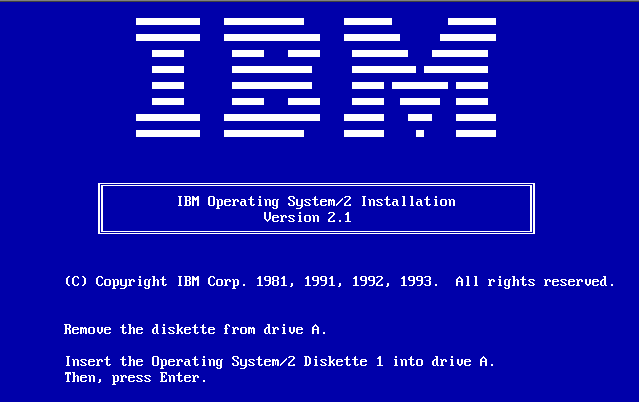
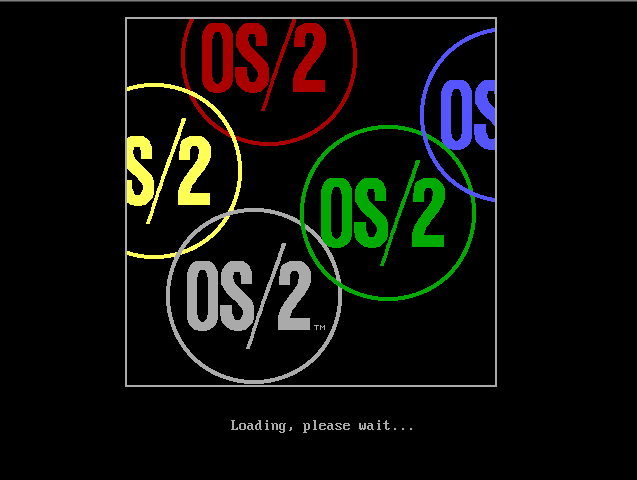
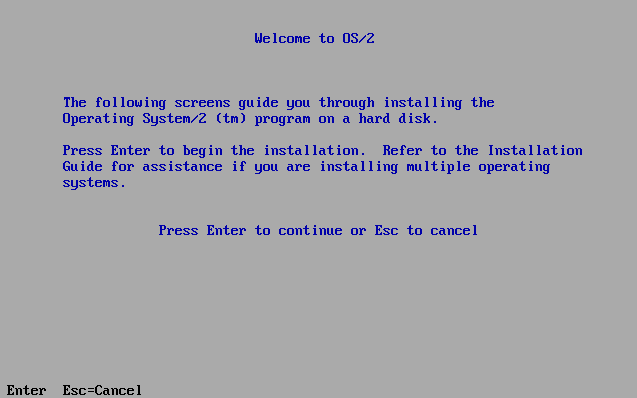

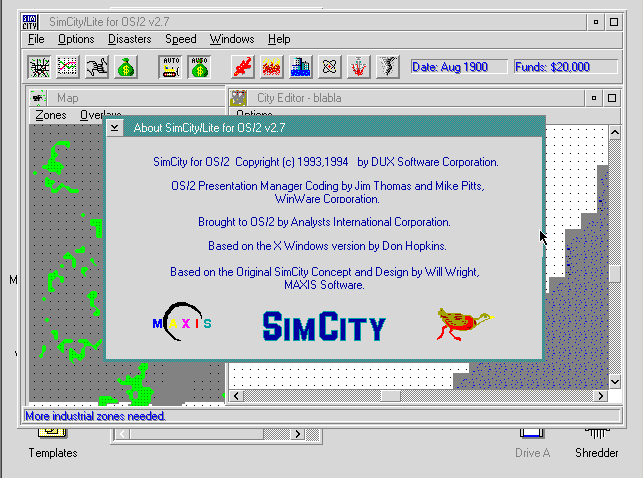
I have 2.11 working in Virtual PC. It was a bit picky installing the S3 graphics drivers though and I had to roll back a few times before I found the right ones.
– Installed the base system from floppy images (clean install).
– Installed Fixpack XR06200.
– Installed S3 graphics driver from after making floppy images from eng30316.zip.
The S3 graphics installation failed on the first couple of attempts as I hadn’t applied the Fixpack.
Thank goodness for Winimage!
It is a shame that they killed Virtual PC, removed everything cool about it, and made it a glorified IE6 hosting platform…
Thanks for the Video driver tip though!
And yes, service pack, service pack, service pack!
The multimedia extensions were a separate install because of the licensing terms IBM had with MS. IBM wanted to keep Software Motion Video proprietary. Things that were on the OS/2 install were cross-licensed at that point in history. This changed with the infamous ‘divorce’. Also, select Win32s apps could run on OS/2 depending on the features needed and Win32s library version. I recall running Matlab for Windows on OS/2. Microsoft started playing cat-and-mouse games, releasing fixes and updates that would break Win-OS2.
Thanks for the insight, I guess it explains why the EE’s needed a separate install.. Funny how such hoarding lead to a partnership with Sybase which led to MS SQL Server..
What ever happened to Indeo?